The revolutions of the Arab Spring and recent pro-democracy protests in Hong Kong brought worldwide attention to the possibility of a resurgence of democratization. Unlike democratic revolutions of the past, these contemporary movements for political transition are increasingly aided by the use of technology and social media. Facebook, Twitter, and Instagram enable political movements to project their cause across the world, gaining momentum and range at unprecedented rates. Because of its impactful, transformative potential, social media has become an indispensable tool in protests and revolutions, distinguishing today’s democratic movements from those only a few decades ago.
In the late 20th century, democracy spread across southern Europe, Sub-Saharan Africa, and Latin America, replacing longstanding authoritarian regimes in what is called “the third wave.” This diffusion of democracy proliferated following the end of the Cold War, collapse of the Soviet Union, and opening of the Eastern bloc. After decades of ideological confrontation, it appeared as if Western liberal democracy had triumphed and would encompass the globe, ushering in peace, prosperity, and “the end of history.”
However, North Africa, the Middle East, and large parts of Asia proved resilient to the third wave of democracy. In these regions, authoritarianism, or some hybridization of democracy and autocracy prevailed. In select democratized countries from the third wave, an observable regression into former authoritarianism set in. But with the popular uprising in Tunisia in 2011 that removed an entrenched autocracy, protests against authoritarian regimes spread apace across North Africa and the Middle East. These demonstrations have been labeled the beginning of “the fourth wave” of democracy.
Before the Arab Spring and since then, contemporary movements for accountable governance, economic and political reform, and popular participation in government have been influenced by new technology. Videos uploaded to YouTube, pictures on Flickr and Tumblr, news feeds on Twitter and Facebook diffuse information and can spark wider unrest. These social media outlets proved instrumental in the demonstrations in Ukraine and Hong Kong, where protests were captured, uploaded to the Internet, and transported across borders and oceans. Posting and accessing this information, as well as sharing opinions and commentary can be done instantaneously by anyone, anywhere in the world. In this manner, social media facilitates rapid, mass mobilization that can be difficult for authoritarian regimes to suppress. This fundamental alteration in news coverage and reporting enable wide participation in events, give a global voice to protesters, and differentiate contemporary democratic movements from those of the third wave.
***
Ukraine’s Orange Revolution, 2004
Demonstrators across Ukraine endured the cold and snow to protest election fraud in what became known as the Orange Revolution. Their efforts succeeded in overturning the election outcome. Photo by Olexandr Novickyj. Tent city at Khreshchatyk St. in Syiv, 2004.
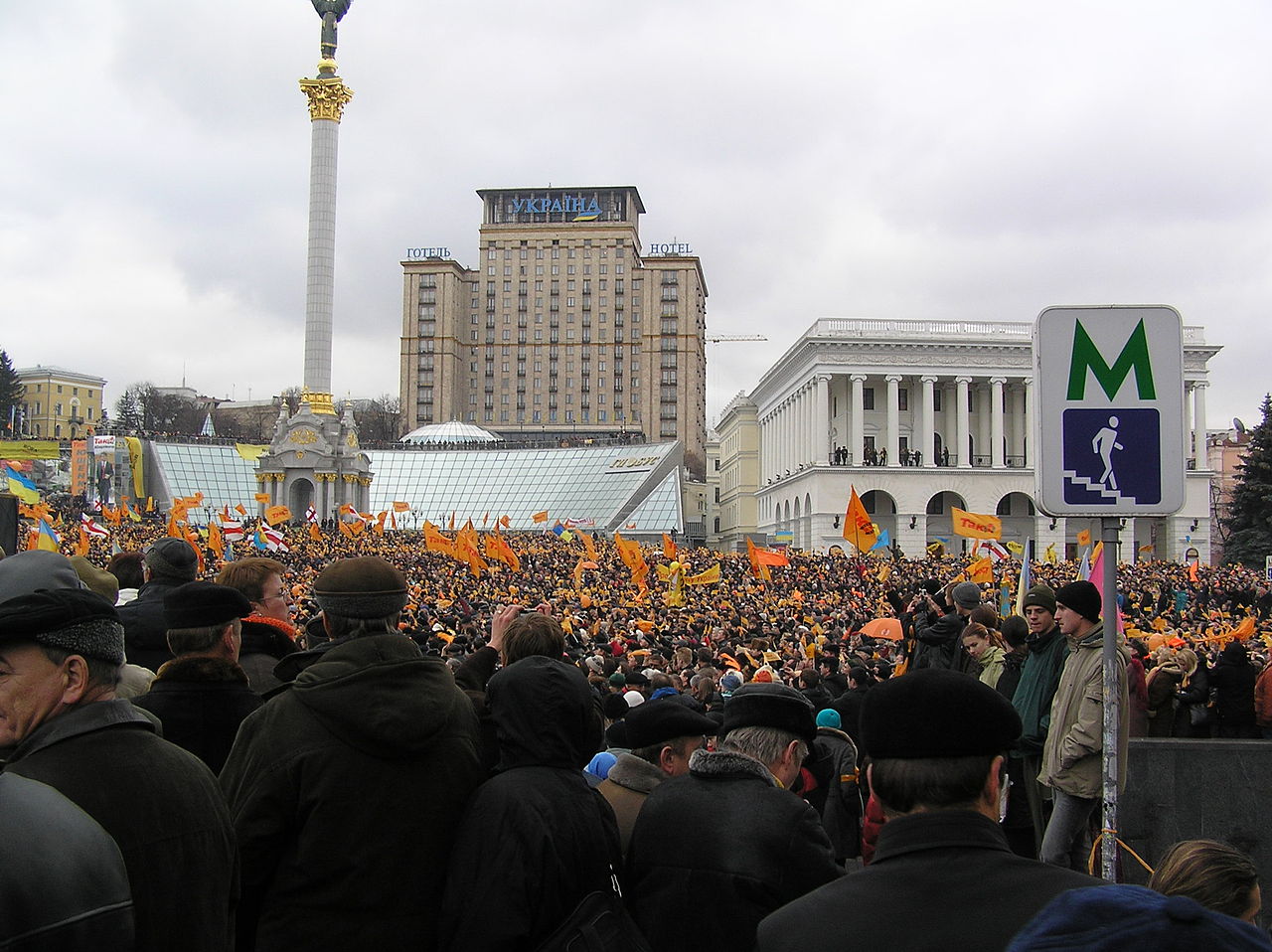
In late November 2004, thousands filled Kiev’s Independence Square in nonviolent protest against corrupt elites who falsified election results in favor of Russian-backed Prime Minister Viktor Yanukovich. The result was later annulled and a revote held, which elected the pro-Western Viktor Yushchenko as president. Photo by en-wiki user Serhiy.
Ukraine, 2013-2014
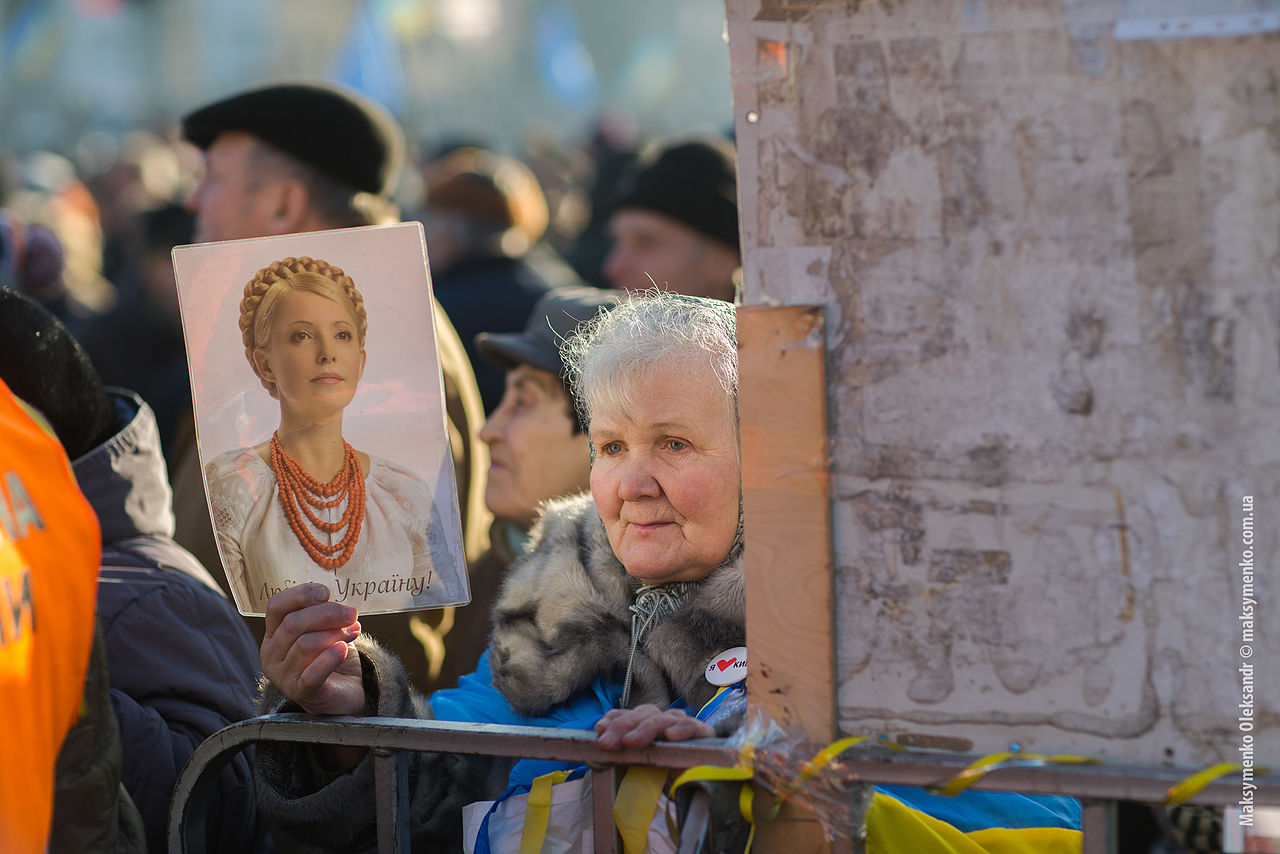
An elderly woman holds a picture of Yulia Tymoshenko–a heroine of the Orange Revolution and symbol of Ukraine’s opposition.
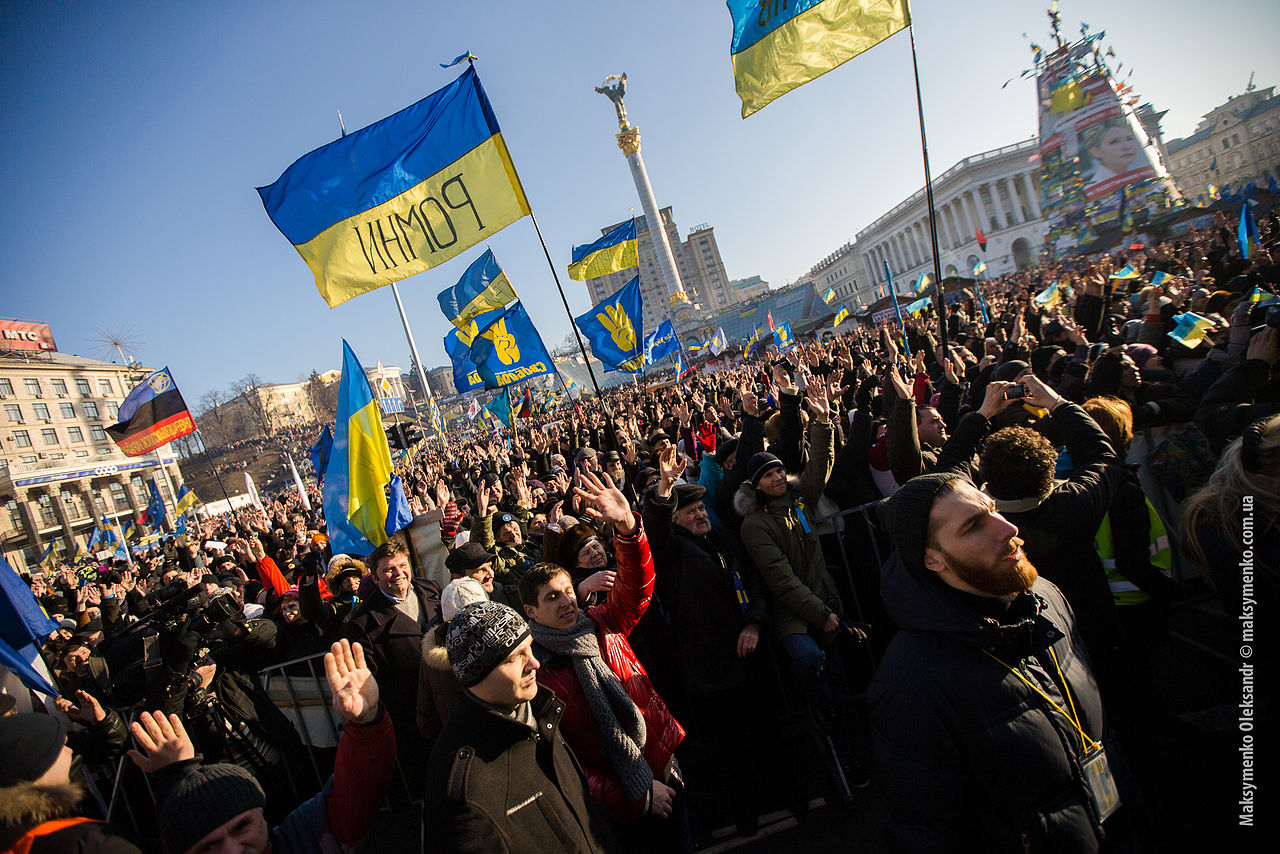
Following President Viktor Yanukovich’s rejection of a trade deal with the EU in favor of closer ties with Russia in November 2013, thousands gathered in Kiev for the largest demonstrations since the Orange Revolution in 2004.

Protesters uphold a makeshift fortification in Kiev’s Independence Square during a violent confrontation with security forces in February 2014. Photo by Mstyslav Chernov/Unframe.
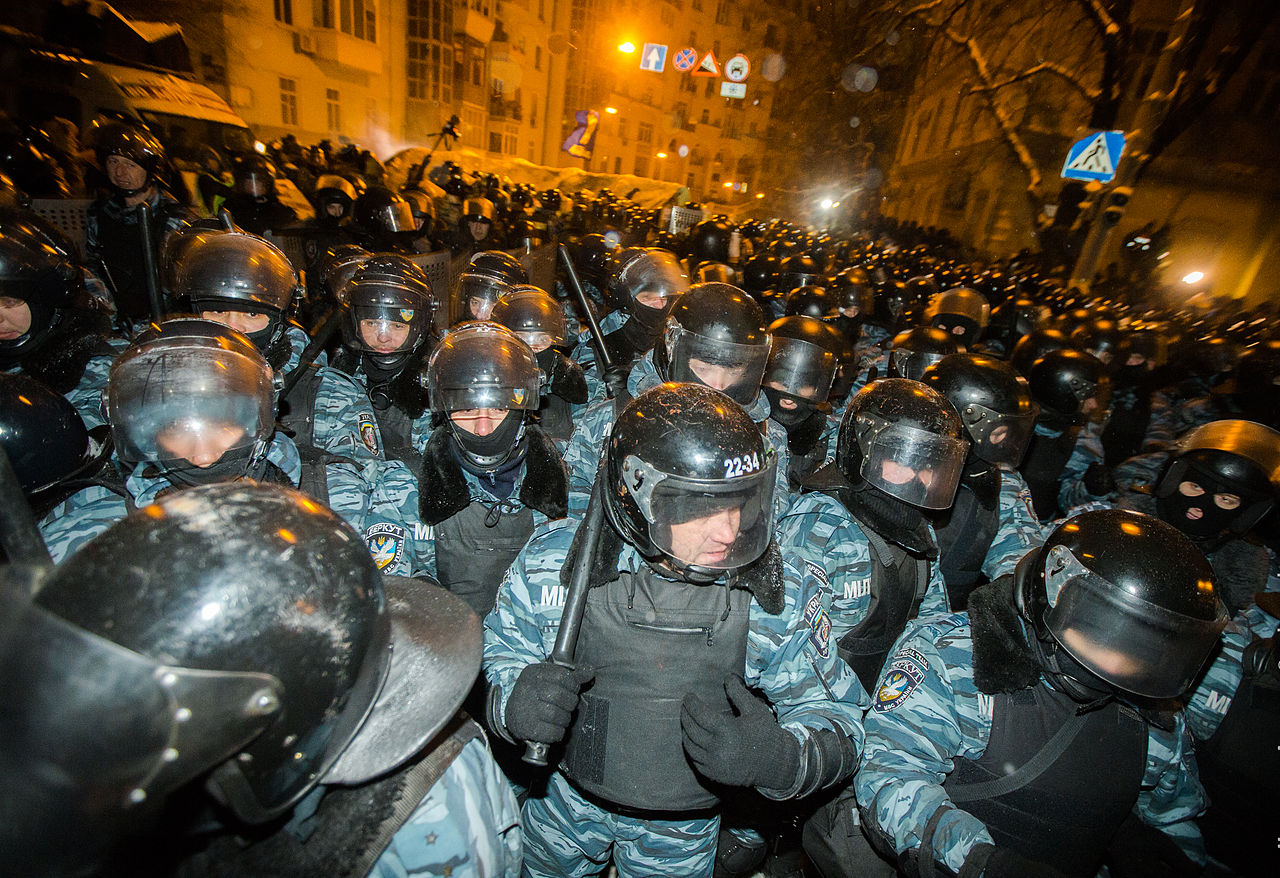
As the protests in Ukraine continued, security forces and the opposition clashed, resulting in the worst violence Ukraine has experienced in almost 70 years and turning Independence Square into a battlefield. Photo by Sasha Maksymenko.
Tunisia, 2011
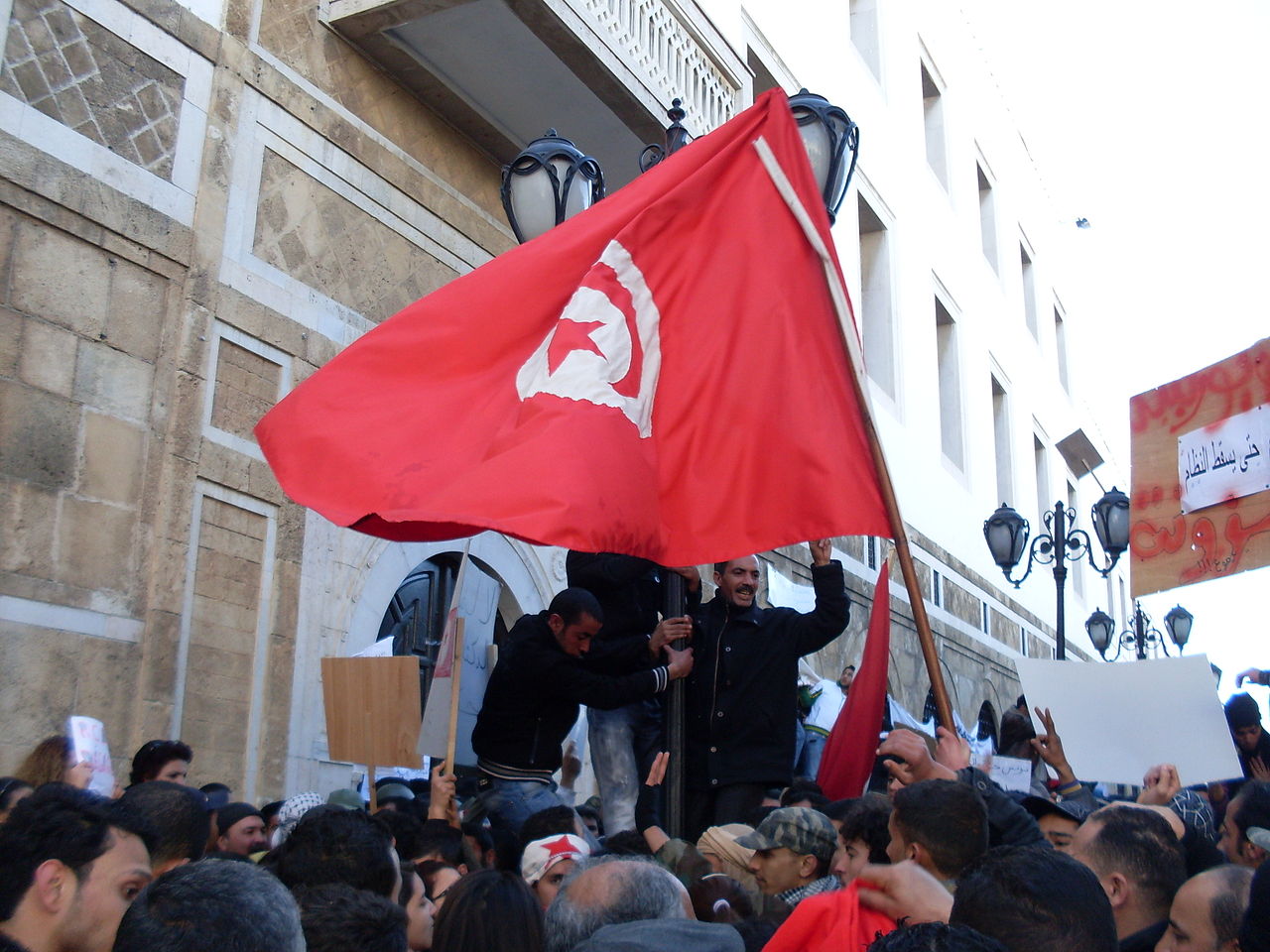
Protesters display the Tunisian flag during Tunisia’s 2010 Jasmine Revolution. Protesting against government corruption, poverty, and political repression, the revolution forced President Zine el-Abidine Ben Ali from power and initiated a wave of protests throughout the Middle East and North Africa in what became known as the Arab Spring. Photo by M. Rais.
Georgia Rose Revolution, 2003
Georgia’s Rose Revolution in November 2003 united opposition groups against the corruption, economic decline, and election fraud associated with President Shevardnadze and his regime. The revolution resulted in a change of power and restored hope for democracy in the Caucasus–a former Soviet region. Photo by Zaraza.
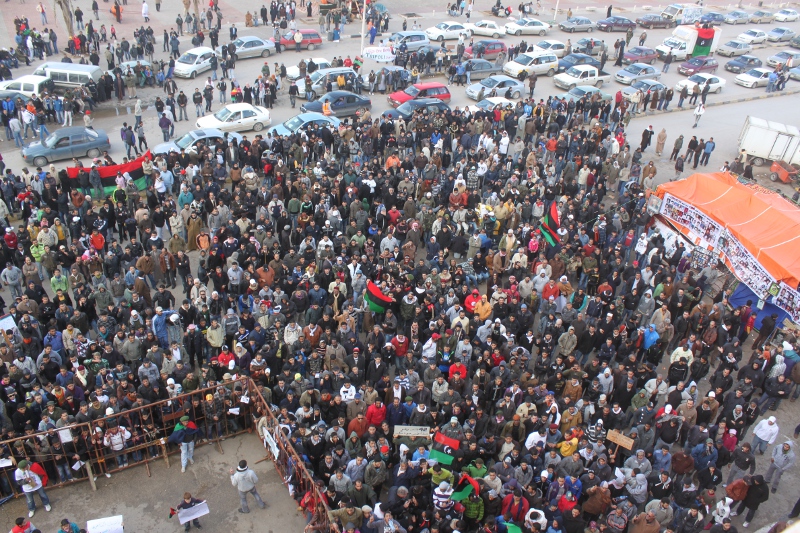
Thousands took to the streets in Benghazi, Tripoli, and throughout Libya in opposition to Moammar Gadhafi. Violent clashes between protestors and security forces, and a prolonged conflict with international intervention ultimately led to the removal of Gadhafi from power in 2011. Photo by Al Jazeera English.
Kyrgyzstan, 2010
Since his election in 2005, Kyrgyzstan’s President Kurmanbek Bakiyev increasingly abused the powers of the presidency. His fraudulent re-election sparked protests in 2010, which spread to the capital, Bishkek, and toppled the regime. Here, protestors forcibly enter the White House lawn. Photo by Brokev03.
Iran, 2009
In 2009, Mahmoud Ahmadinejad was declared the winner of Iran’s presidential election, a victory protesters claimed he had stolen. Photographer wishes to remain anonymous.
Hong Kong, 2014
Following Beijing’s decision to rescind open nominations for the election of Hong Kong’s leader, thousands of pro-democracy supporters flooded the streets of Hong Kong in a city-wide protest in late September 2014. Photo by Citobun.
Egypt, 2011
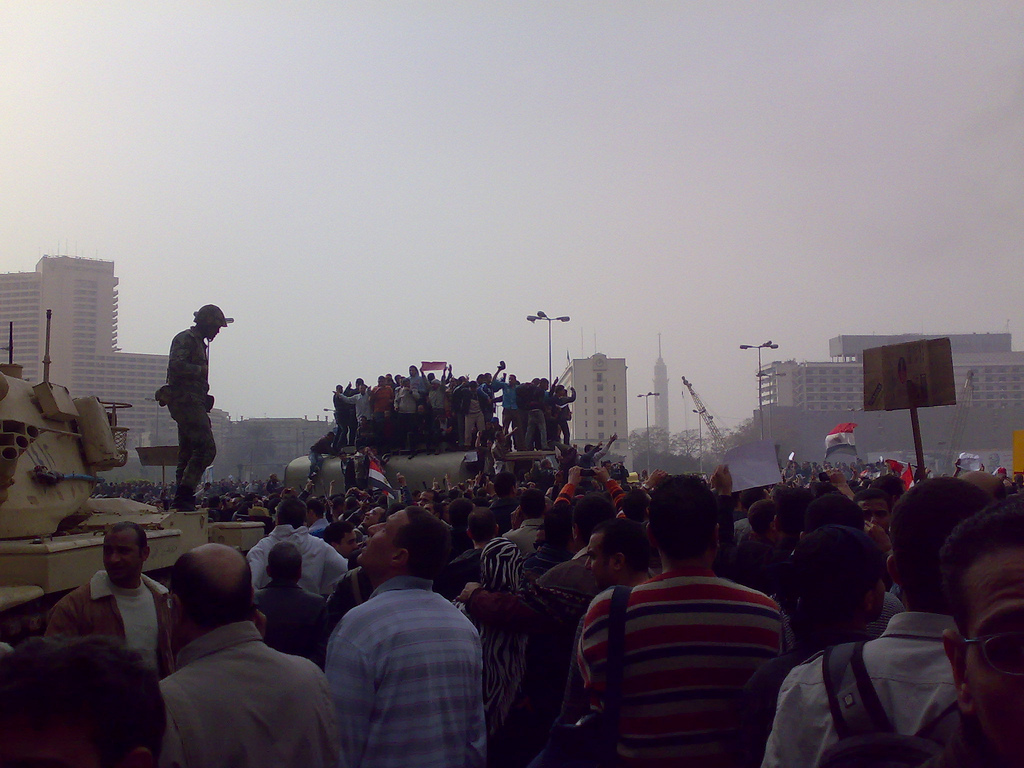
Egyptian security forces look on as protesters demand an end to the decades long rule of President Hosni Mubarak in 2011. Photo by Ramy Raoof.
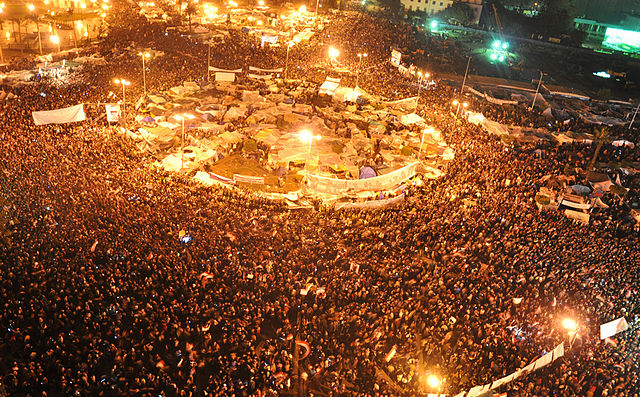
Thousands gathered in Tahrir Square in Cairo to demonstrate against President Hosni Mubarak and his regime. Photo by Jonathan Rashad.
Burma, 2007
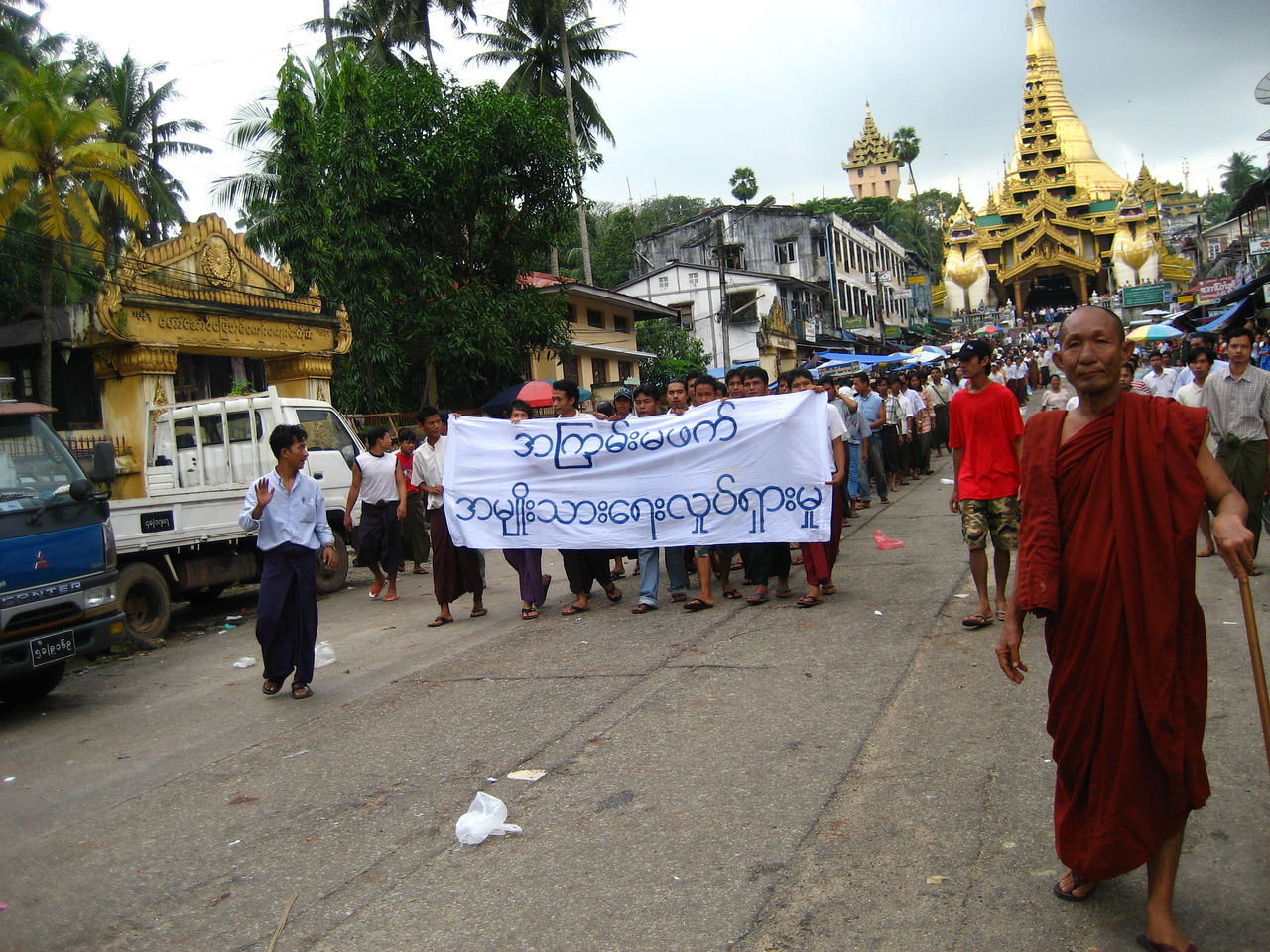
In 2007, Buddhist monks played an important role in Burma’s protests against the military government and its economic policies. Because of the color of the robes worn by the monks, the event is known as the Saffron Revolution. Photo by racoles.


a global affairs media network
In Photos: The Fourth Wave

November 26, 2014
The revolutions of the Arab Spring and recent pro-democracy protests in Hong Kong brought worldwide attention to the possibility of a resurgence of democratization. Unlike democratic revolutions of the past, these contemporary movements for political transition are increasingly aided by the use of technology and social media. Facebook, Twitter, and Instagram enable political movements to project their cause across the world, gaining momentum and range at unprecedented rates. Because of its impactful, transformative potential, social media has become an indispensable tool in protests and revolutions, distinguishing today’s democratic movements from those only a few decades ago.
In the late 20th century, democracy spread across southern Europe, Sub-Saharan Africa, and Latin America, replacing longstanding authoritarian regimes in what is called “the third wave.” This diffusion of democracy proliferated following the end of the Cold War, collapse of the Soviet Union, and opening of the Eastern bloc. After decades of ideological confrontation, it appeared as if Western liberal democracy had triumphed and would encompass the globe, ushering in peace, prosperity, and “the end of history.”
However, North Africa, the Middle East, and large parts of Asia proved resilient to the third wave of democracy. In these regions, authoritarianism, or some hybridization of democracy and autocracy prevailed. In select democratized countries from the third wave, an observable regression into former authoritarianism set in. But with the popular uprising in Tunisia in 2011 that removed an entrenched autocracy, protests against authoritarian regimes spread apace across North Africa and the Middle East. These demonstrations have been labeled the beginning of “the fourth wave” of democracy.
Before the Arab Spring and since then, contemporary movements for accountable governance, economic and political reform, and popular participation in government have been influenced by new technology. Videos uploaded to YouTube, pictures on Flickr and Tumblr, news feeds on Twitter and Facebook diffuse information and can spark wider unrest. These social media outlets proved instrumental in the demonstrations in Ukraine and Hong Kong, where protests were captured, uploaded to the Internet, and transported across borders and oceans. Posting and accessing this information, as well as sharing opinions and commentary can be done instantaneously by anyone, anywhere in the world. In this manner, social media facilitates rapid, mass mobilization that can be difficult for authoritarian regimes to suppress. This fundamental alteration in news coverage and reporting enable wide participation in events, give a global voice to protesters, and differentiate contemporary democratic movements from those of the third wave.
***
Ukraine’s Orange Revolution, 2004
Demonstrators across Ukraine endured the cold and snow to protest election fraud in what became known as the Orange Revolution. Their efforts succeeded in overturning the election outcome. Photo by Olexandr Novickyj. Tent city at Khreshchatyk St. in Syiv, 2004.

In late November 2004, thousands filled Kiev’s Independence Square in nonviolent protest against corrupt elites who falsified election results in favor of Russian-backed Prime Minister Viktor Yanukovich. The result was later annulled and a revote held, which elected the pro-Western Viktor Yushchenko as president. Photo by en-wiki user Serhiy.
Ukraine, 2013-2014

An elderly woman holds a picture of Yulia Tymoshenko–a heroine of the Orange Revolution and symbol of Ukraine’s opposition.

Following President Viktor Yanukovich’s rejection of a trade deal with the EU in favor of closer ties with Russia in November 2013, thousands gathered in Kiev for the largest demonstrations since the Orange Revolution in 2004.

Protesters uphold a makeshift fortification in Kiev’s Independence Square during a violent confrontation with security forces in February 2014. Photo by Mstyslav Chernov/Unframe.

As the protests in Ukraine continued, security forces and the opposition clashed, resulting in the worst violence Ukraine has experienced in almost 70 years and turning Independence Square into a battlefield. Photo by Sasha Maksymenko.
Tunisia, 2011

Protesters display the Tunisian flag during Tunisia’s 2010 Jasmine Revolution. Protesting against government corruption, poverty, and political repression, the revolution forced President Zine el-Abidine Ben Ali from power and initiated a wave of protests throughout the Middle East and North Africa in what became known as the Arab Spring. Photo by M. Rais.
Georgia Rose Revolution, 2003
Georgia’s Rose Revolution in November 2003 united opposition groups against the corruption, economic decline, and election fraud associated with President Shevardnadze and his regime. The revolution resulted in a change of power and restored hope for democracy in the Caucasus–a former Soviet region. Photo by Zaraza.

Thousands took to the streets in Benghazi, Tripoli, and throughout Libya in opposition to Moammar Gadhafi. Violent clashes between protestors and security forces, and a prolonged conflict with international intervention ultimately led to the removal of Gadhafi from power in 2011. Photo by Al Jazeera English.
Kyrgyzstan, 2010
Since his election in 2005, Kyrgyzstan’s President Kurmanbek Bakiyev increasingly abused the powers of the presidency. His fraudulent re-election sparked protests in 2010, which spread to the capital, Bishkek, and toppled the regime. Here, protestors forcibly enter the White House lawn. Photo by Brokev03.
Iran, 2009
In 2009, Mahmoud Ahmadinejad was declared the winner of Iran’s presidential election, a victory protesters claimed he had stolen. Photographer wishes to remain anonymous.
Hong Kong, 2014
Following Beijing’s decision to rescind open nominations for the election of Hong Kong’s leader, thousands of pro-democracy supporters flooded the streets of Hong Kong in a city-wide protest in late September 2014. Photo by Citobun.
Egypt, 2011

Egyptian security forces look on as protesters demand an end to the decades long rule of President Hosni Mubarak in 2011. Photo by Ramy Raoof.

Thousands gathered in Tahrir Square in Cairo to demonstrate against President Hosni Mubarak and his regime. Photo by Jonathan Rashad.
Burma, 2007

In 2007, Buddhist monks played an important role in Burma’s protests against the military government and its economic policies. Because of the color of the robes worn by the monks, the event is known as the Saffron Revolution. Photo by racoles.


